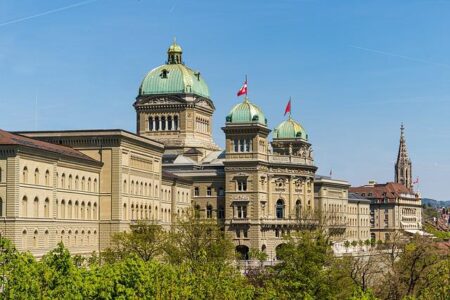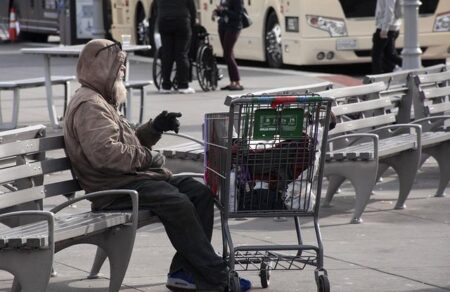Reframing Cooling as an Essential Human Right in a Warming World
Escalating Need for Cooling: A Public Health Imperative
With global temperatures climbing steadily, the demand for effective cooling solutions has shifted from a luxury to an urgent necessity. Rapid urban growth combined with more frequent and intense heatwaves has intensified the need for accessible cooling, especially in densely populated cities. Vulnerable groups—such as seniors, children, and individuals with chronic illnesses—face heightened risks including heat exhaustion, heat stroke, and worsening cardiovascular and respiratory conditions when cooling is unavailable. This elevates cooling from a comfort feature to a vital public health intervention.
Consequences of inadequate cooling access include:
- Higher death rates during extreme heat episodes
- Increased hospital admissions due to heat-related ailments
- Declines in work efficiency and school performance in hot climates
- Growing disparities as cooling remains inaccessible to marginalized communities
| Region | Estimated Cooling Demand Growth by 2030 | Health Risk Severity |
|---|---|---|
| South Asia | +72% | High |
| Sub-Saharan Africa | +88% | Critical |
| Latin America | +62% | Moderate |
| Middle East & North Africa | +78% | High |
Closing the Divide: Affordable and Eco-Friendly Cooling Solutions
Despite the growing necessity, many communities—especially in low-income and rural areas—struggle to afford sustainable cooling technologies. The upfront costs of energy-efficient devices and ongoing electricity expenses often place these solutions beyond reach. Addressing this gap requires a comprehensive strategy that blends technological innovation, supportive policies, and financial accessibility. For instance, expanding access to off-grid solar cooling units, establishing community refrigeration hubs, and implementing targeted subsidies can significantly lower economic barriers and promote widespread use.
Equally important is the adoption of environmentally responsible cooling methods that do not sacrifice affordability. Utilizing natural refrigerants, designing products for longevity, and embracing circular economy principles are key to minimizing ecological footprints. The following table illustrates how various cooling technologies balance cost-effectiveness and sustainability in practical settings:
| Technology | Initial Investment | Energy Consumption | Environmental Footprint | Suitability for Low-Income Communities |
|---|---|---|---|---|
| Solar-Driven Evaporative Coolers | Low | Minimal | Low Carbon Emissions | High |
| Phase-Change Material-Based Refrigeration | Moderate | Low | No Ozone Depletion | Medium |
| High-Efficiency Vapor Compression AC | High | Moderate | Low Global Warming Potential Refrigerants | Low |
- Policy incentives can stimulate demand and reduce consumer expenses.
- Community involvement ensures solutions are tailored to local needs and gain trust.
- Collaborations between public and private sectors accelerate deployment and infrastructure growth.
Policy and Innovation: Foundations for Inclusive Cooling Infrastructure
Recognizing cooling as a fundamental service, governments worldwide are crafting policies that promote equitable access, energy efficiency, and climate resilience. Progressive regulations that set stringent energy standards, encourage clean cooling technologies, and focus on vulnerable populations are pivotal in transforming cooling from a privilege into a universal right. Integrating cooling considerations into urban development and climate adaptation plans further solidifies its role as essential infrastructure.
Critical policy measures include:
- Financial support for low-global-warming-potential refrigerant adoption
- Mandatory green building codes emphasizing passive cooling techniques
- Funding research into affordable, decentralized cooling innovations
- Focused investment in cooling infrastructure for underserved communities
Technological breakthroughs are equally transformative. Innovations such as solar-powered cooling systems, thermally driven chillers, and IoT-enabled smart cooling devices are reducing costs and expanding access. Partnerships among governments, private enterprises, and international organizations are essential to scale these advancements and embed equity into cooling infrastructure development.
| Innovation | Effectiveness | Equity Advantage |
|---|---|---|
| Solar Cooling Panels | Cut energy expenses by 40% | Ideal for off-grid communities |
| Passive Ventilation Systems | Reduce indoor temperatures by up to 5°C | Cost-effective and easy to implement |
| IoT-Enabled Smart Cooling | Enhances energy efficiency by 30% | Customizable to diverse user needs |
Empowering Communities with Sustainable Cooling Practices
Community-led initiatives have proven vital in developing resilient and energy-efficient cooling solutions. Projects such as neighborhood cooling centers, shaded public areas, and urban tree-planting campaigns not only provide immediate relief from heat but also strengthen social bonds. Active participation by residents reduces individual energy consumption and builds adaptive networks capable of responding effectively to heat emergencies. These grassroots efforts blend indigenous knowledge with modern technology to create localized, sustainable cooling strategies.
Moreover, deploying energy-saving technologies tailored to community needs can significantly lower environmental impacts while ensuring equitable access. Examples include solar-powered fans, shared smart thermostats, and reflective roofing materials, which demonstrate scalable, affordable innovations at the local level. The table below summarizes key community-focused approaches and their benefits:
| Approach | Energy Reduction | Community Benefits |
|---|---|---|
| Urban Tree Planting | Up to 20% temperature reduction | Enhances air quality and neighborhood aesthetics |
| Shared Cooling Facilities | Decreases individual AC usage | Provides inclusive, safe spaces during heatwaves |
| Solar-Powered Fans | Reduces electricity bills by 30% | Promotes renewable energy adoption |
| Reflective Roof Coatings | Lowers indoor heat by 15% | Improves building durability and comfort |
Conclusion: Prioritizing Cooling as a Fundamental Human Necessity
As climate change intensifies and heatwaves become more frequent, ensuring access to affordable, reliable cooling is critical for safeguarding public health, economic productivity, and social justice. Reframing cooling as an indispensable lifeline rather than a discretionary luxury calls for urgent collaboration among policymakers, industry leaders, and communities. Investing in sustainable cooling technologies and inclusive infrastructure is essential to protect the most vulnerable and build resilience against escalating heat risks. Without decisive action, those at greatest risk will continue to suffer disproportionately, underscoring the urgent need to recognize cooling as a basic human right.













